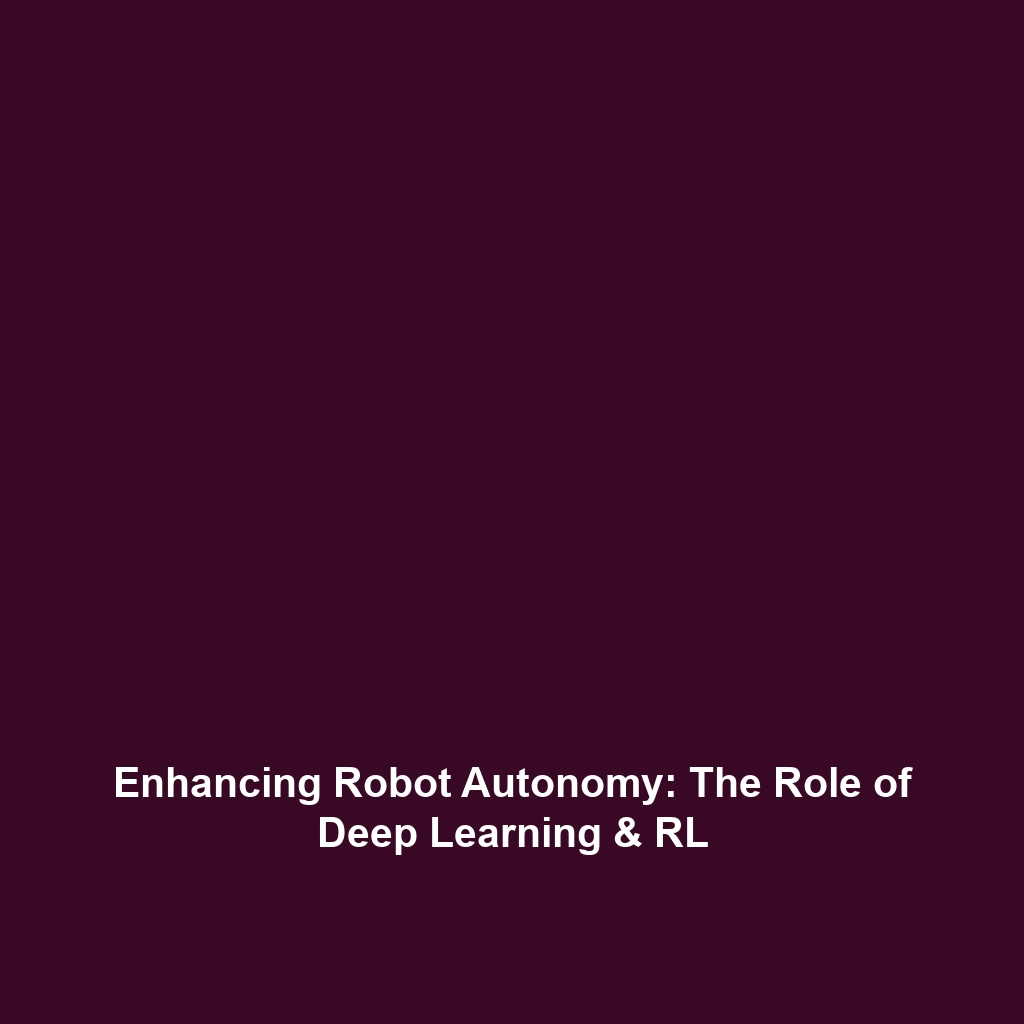The Importance of Reinforcement Learning and Deep Learning for Improving Robot Autonomy
Introduction
Reinforcement learning (RL) and deep learning (DL) play pivotal roles in enhancing the autonomy of humanoid robots, enabling them to adapt, learn, and interact with their environment more effectively. As robotics technology continues to advance, these techniques become increasingly significant, directly impacting how humanoid robots operate in real-world scenarios. This article explores the vital importance of reinforcement learning and deep learning in improving robot autonomy, highlighting their relevance within the broader category of humanoid robots.
Key Concepts
The integration of reinforcement learning and deep learning within humanoid robots involves several core concepts:
1. Reinforcement Learning (RL)
Reinforcement learning is a type of machine learning where agents learn to make decisions by taking actions to maximize cumulative rewards. In the context of humanoid robots, RL is fundamental for teaching robots to perform complex tasks through trial and error.
2. Deep Learning (DL)
Deep learning, a subset of machine learning, utilizes neural networks with many layers to analyze various data inputs. Humanoid robots leverage deep learning for tasks such as image recognition, natural language processing, and obstacle avoidance, allowing them to understand and navigate their surroundings autonomously.
3. Robot Autonomy
Autonomy in humanoid robots refers to the ability to perform tasks without human intervention. The synergy of RL and DL enhances this autonomy by enabling robots to learn from their environment, adapt to changing conditions, and make informed decisions based on past experiences.
Applications and Real-World Uses
Reinforcement learning and deep learning are applied in numerous ways to support the autonomy of humanoid robots:
- Healthcare Assistants: Humanoid robots equipped with RL and DL techniques can assist healthcare professionals by managing administrative tasks or providing companionship to patients.
- Robotic Companions: In homes or social settings, humanoid robots can learn social cues and preferences through RL, improving interaction and effectiveness.
- Industrial Automation: In manufacturing, humanoid robots utilize these learning algorithms to navigate complex workflows and enhance production efficiency.
Current Challenges
Several challenges persist in the study and application of reinforcement learning and deep learning for improving robot autonomy in humanoid robots:
- Data Scarcity: A lack of comprehensive datasets can hinder the training processes of RL and DL algorithms.
- Real-Time Processing: The computational demands of these learning techniques often exceed the real-time processing capabilities of existing hardware.
- Generalization: Humanoid robots sometimes struggle to transfer learning from one context to another effectively.
Future Research and Innovations
The future of humanoid robots lies in continuous innovation, particularly in the realms of reinforcement learning and deep learning:
- Enhanced Algorithms: Researchers are developing more efficient algorithms that require less data to learn effectively.
- Interdisciplinary Approaches: Integration of cognitive science and robotics can lead to more intuitive RL applications.
- Improved Hardware: As computing technology evolves, more powerful processors will enable real-time analysis and decision-making.
Conclusion
Reinforcement learning and deep learning are crucial for enhancing the autonomy of humanoid robots, enabling them to learn, adapt, and operate independently in complex environments. Understanding these technologies is essential for anyone looking to explore the future of robotics. For more insights into advancements in robotics, consider reading our articles on robot navigation technologies and machine learning applications in robotics.









